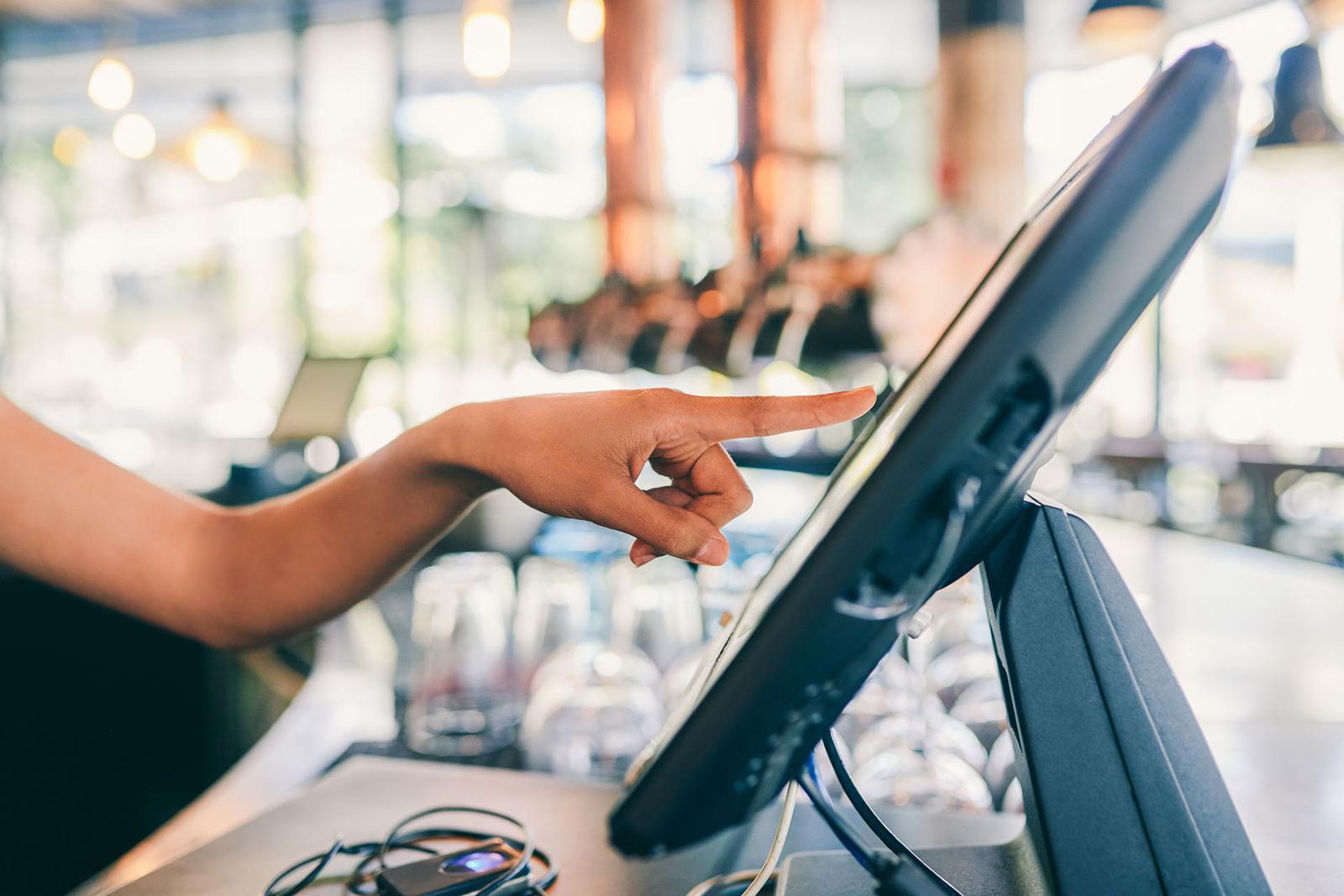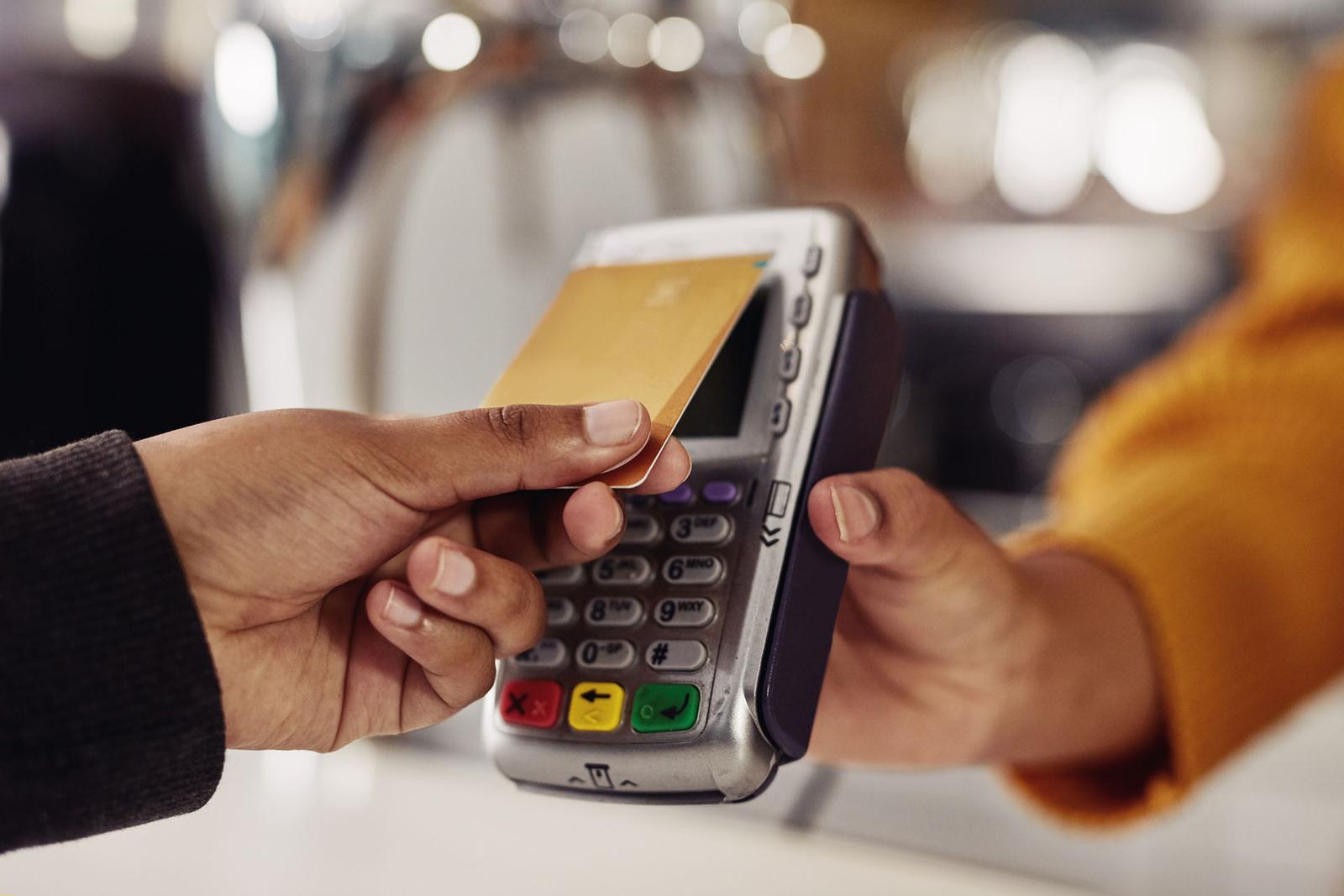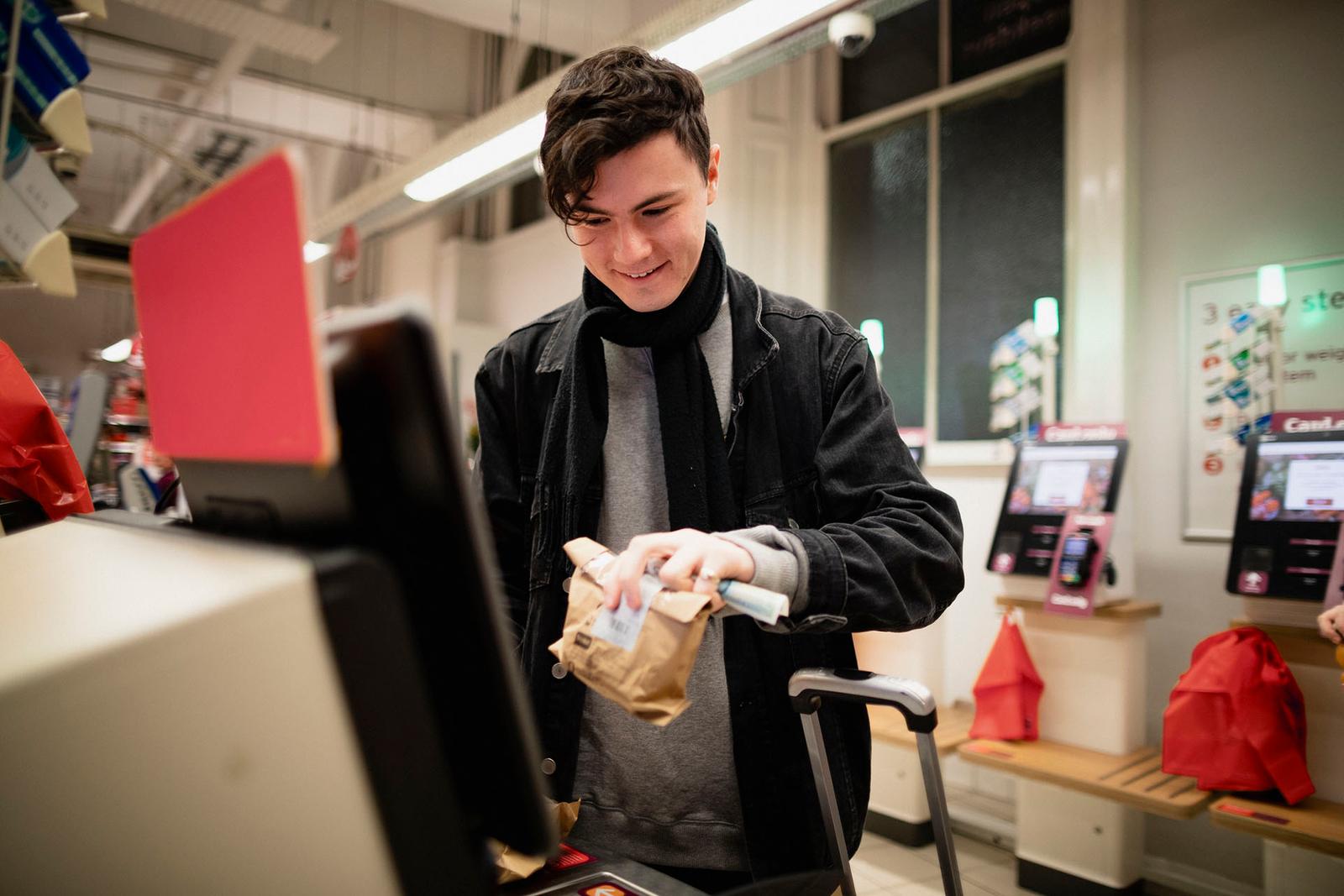8 Retail IoT Applications That Are Disrupting the Industry

From free-roaming robot to smart shelves, IoT technology is impacting how customers shop at retail stores today.
A brief history of retail technology
The invention of the cash register in the 1880s was a turning point in retail technology. The cash register allowed retailers to better keep track of sales and records, and to protect cash on the premises. The 20th century saw the advent of credit cards and barcodes, setting the stage for sophisticated technologies that transfer more of the retail workload from humans to computers—and enable consumers to go shopping from the comfort of their couches. The first online retail transaction took place in 1994, opening the door to e-commerce and the rise of online retail giants such as Amazon.
In this increasingly varied environment, Internet of Things (IoT) technology was poised to make its mark on the retail industry.

Benefits of IoT for retail
By allowing companies to keep a closer eye on their supply chains, inventories, sales, and customer reactions, IoT technology brings several important benefits to retail. And in the midst of the COVID-19 pandemic, connected devices are also helping retailers cope with challenges such as social distancing and inventory shortages. Let’s look at a few benefits of IoT for retail:
Better supply chain management
Perhaps the biggest boon of IoT for retailers is its ability to keep track of goods in transit. With many retailers now dependent on global supply chains (and many of those supply chains disrupted during the pandemic), the introduction of asset tracking sensors such as RFID tags and GPS modules allow companies to monitor the whereabouts of their items and predict when they will arrive. Some retailers also use IoT devices to measure shipping conditions like temperature, which is especially important in grocery cold chain shipments. When retailers have access to real-time information about the location and status of their goods, they’re better able to provide dependable availability and communications to customers.
Predictive maintenance for equipment
Brick-and-mortar stores and warehouses have complicated equipment, from forklifts to refrigeration units to HVAC systems, that need to stay up and running to enable smooth operations. IoT sensors installed on machinery can provide insights into status and maintenance needs, allowing retailers to predict when they will need to be serviced.
Improved inventory management
Once items are delivered to a store or warehouse, retailers still need to keep track of them. Without close monitoring, stores can end up with product overstocks and shortages, ultimately depleting their bottom line. IoT technologies such as RFID tags, digital price tags, and video monitoring systems help retailers gain specific insights about what’s on their shelves and make predictions about future demand, helping to inform procurement orders. This kind of information is particularly useful during times of major disruption, such as the COVID-19 pandemic.
Enhanced customer service
IoT technology for supply chain and inventory management provides the behind-the-scenes assistance retailers need to make sure their customers can walk in and find what they need on the shelves (or on their e-commerce website’s search engine). Better product availability certainly drives customer service and satisfaction, but retailers are also using IoT sensors and video systems in their stores to observe and predict customer behavior and provide better service. For example, an AI-powered video surveillance system notices a surge of customers heading toward checkout at a certain time and alerts the store manager to send more personnel to the front of the store. Such connected video systems can also help retailers enforce social distancing protocols and ensure that customers are following local public health guidelines.
Automated Point of Sale (PoS)
Services such as self-checkout have become ubiquitous at many larger retail stores, giving customers the chance to pay for their items without standing in the (usually longer) regular checkout lines. Even so, retailers may still lose sales when customers see a crowd at the front of the store and decide to leave their items and walk out. To avoid that loss in revenue, some retailers are starting to use automated point of sale (PoS) systems, which enable customers to scan product barcodes with their smartphones as they leave and pay via a mobile app.

Current challenges for IoT in the retail industry
While the benefits of retail IoT are many, there are also growing pains to address if the industry is to adopt the technology successfully. Here are a few of the current challenges:
Streamlining online and in-store experiences
Making sure customers have the same experiences online and in-store is a major challenge, particularly for large retailers with many individual brick-and-mortar locations. When a customer looks up an item online and finds that it’s available at a particular store, they show up expecting to find it. If there are delays or discrepancies between the online system and the store inventory, that customer will quickly become annoyed. While advantageous, giving customers better insights via websites or mobile apps also increases pressure on retailers to make sure that all their data is accurate and up-to-date.
Data management
Keeping inventory data updated between store and website is just one facet of the wider challenge of data management. Retail IoT applications generate copious amounts of data, which must be stored, aggregated, and analyzed in real time to provide value. This undertaking requires massive data system capacity that would have been nearly impossible before cloud-based solutions, but even with them in place, retailers need IT and analytics professionals on the job to glean insights and make recommendations.
Security
Always a challenge in the emerging world of IoT, security can prove a problem in retail. While capturing more information from customers and vendors can help improve their experiences, it also means that data is stored in the retailer’s system and vulnerable to hacking. Many customers may also be concerned about privacy when retailers use video monitors and people counting devices to monitor stores. If the IoT sensors and devices themselves are not secure, the retailers are passing along that vulnerability (https://www.hologram.io/blog/iot-security-vulnerabilities) to their customers.
Connectivity
Keeping devices connected inside stores and warehouses is typically not a problem, but can be a challenge for retailers tracking products on the move in their supply chain. RFID tags are dependent on external hardware (RFID reader devices) to prompt the tags to report their location. If a shipment is lost or stolen and never comes close to another RFID reader device, there’s no way to track it down. That’s why as cellular IoT devices and connectivity become more affordable and efficient, many companies are opting for real-time asset tracking systems that depend on cellular connectivity.

8 applications of IoT in retail
Now let’s take a look at some specific applications of retail IoT:
Point of sale (PoS) systems
IoT-enabled PoS systems are portable, cloud-based, and able to keep track of customer, inventory and returns data as they process transactions. When a customer purchases an item, the PoS notes whether that item is low in stock and if so, sends an alert to order more. One example is Lightspeed’s Shopkeep, an iPad-based PoS that includes software for the register and sales analytics, and also includes a mobile app so retailers can access up-to-date information on their smartphones.
People counters
Keeping an eye on how many people are in a store has long been a helpful data point for retailers, and IoT technology is making it easier to tell. Sensors installed at the door count the number of customers entering and exiting, and may compare that data against other information such as sales revenue to determine what and how much each person is purchasing. For example, Kepler Analytics measures retail traffic and compares it against fitting room conversion rates, internal reporting systems, and calendar data to give retailers a comprehensive set of recommendations for sales optimization. In 2020, Kepler Analytics also launched a COVID-19 toolkit that lets retailers monitor traffic in stores to ensure social distancing.
Asset tracking
Tracking shipments and inventory involves using IoT sensors, Bluetooth Low Energy (BLE) beacons or RFID tags on individual items or shipping containers. Some retail stores also use IoT sensors to track in-store assets such as shopping carts with solutions like CartTrac from Bemis Retail Solutions. CartTrac allows stores to track down missing shopping carts both outdoors and indoors using GPS technology.
AI robots
Meeting a free-roaming robot inside a big-box retail store might still sound like something from a sci-fi novel, but it’s already happening in some places. Home improvement retailer Lowe’s introduced the LoweBot in 2016 in its San Francisco stores to help customers find what they need. The LoweBot also monitors inventory as it roams the aisles, sending the collected data back to the retailer’s main data system via a wireless connection.
Smart video systems
Retail stores have long used video systems for security, but with the growth of AI video and smart vision technologies, those systems can do much more than watch for shoplifters. Today’s AI video systems can recognize customer demographics and observe behavior, helping retailers understand the flow of traffic through a store and which displays are attracting the most attention (and sales). For example, IntelliVision’s Smart Retail solution keeps retailers informed about how many customers are in the store, detects intruders in warehouses or back office areas, and sends alerts when it sees customers waiting for assistance.
Smart shelves
Smart shelves typically use RFID sensors to monitor the number of items on a particular shelf. The devices can sense weight, using that data to track how many products are present. When stock runs low, retailers are alerted. Many smart shelves can notify retailers when goods are stolen, and some solutions, such as WiseShelf, also send alerts when they detect high demand on a particular product.
Digital signage
Digital signage has become a common sight in public areas and retail stores, but the technology continues to get smarter. Combined with AI vision video technologies, digital signage can now be tailored to the demographics of people walking by, or triggered by weather reports (if it’s raining, an ad for umbrellas pops up). Many digital signage solutions, such as Cenareo’s digital signage for retail, also offer interactive experiences to customers using touchscreens and QR codes.
Automated checkout systems
Now common in many larger retail stores, self-checkout enables customers to ring up their purchases and pay with minimal oversight from store personnel. On the retailer side, this saves time and effort, and on the customer side, it often speeds up the checkout process. Some stores are also introducing mobile checkout, allowing customers to pay for items in the store via a mobile app, such as the Scan & Go™ option at Sam’s Club.

Successful Retail IoT Integrations
Retailers of all sizes are integrating IoT technology into their operations as they work toward digital transformation. Here are a few examples of companies that have successfully adopted IoT at scale:
Amazon
Online retail giant Amazon is the quintessential example of successful retail IoT adoption. The company has complex systems for shipment tracking and order fulfillment that depend heavily on IoT sensors and data analytics. In its warehouses, a fleet of 45,000 AI robots helps to fill customer orders. On the customer side, Amazon Dash Buttons allow customers to reorder household products at the touch of a button on a small IoT device. And the company’s digital media system lets customers purchase music, movies, e-books, and audiobooks instantly and access them from a cloud-based storage system.
Walmart
A longtime leader in brick-and-mortar retail, Walmart is also making great strides to adopt IoT technologies and build an online presence that competes with large e-commerce sites. In addition to using IoT asset tracking systems to monitor supply chain and inventory data, Walmart builds partnerships with retail tech companies through its incubator, Store No8, and uses successful solutions in its stores. Currently, Walmart uses AI vision to analyze customer behavior and alert employees if there’s a problem. Some stores feature Pick-Up Towers, allowing customers who ordered a product online to come in, scan their digital receipt, and receive their order.
Kroger
Kroger operates 2,800 supermarkets under several brand labels across the U.S. The company was an early adopter of IoT technology in its stores, particularly for inventory tracking, security, and customer service optimization. The company developed the QueVision system in 2012, which uses sensors and predictive analytics to help store managers predict when and where cashiers will be needed at particular times. Kroger also leverages digital signage for price tagging in some of its stores, allowing the company to change prices and activate sales immediately, saving time for employees.
The Future of IoT for Retail
According to a recent study, 87 percent of retailers consider connected technology in their stores as critical to their success. A highly competitive environment is contributing to retailers’ investment in IoT innovation, says Hologram CEO Ben Forgan. “Retailers must continue to rely on innovation and technology to differentiate themselves and improve their chances of survival,” Forgan wrote in a recent article for Harvard Business Review. “As product cycles speed up, retailers will need to become even more agile in identifying microtrends in consumer behavior to produce, distribute, and supply the goods and services that customers want right now.”